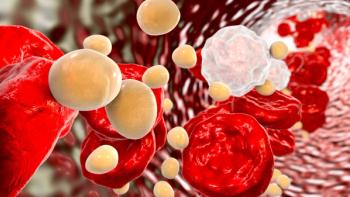
Researchers Seek Optimal Drug Combination for Melanoma
With the high volume of cancer drugs available, determining the most effective combination is a significant hurdle.
With the high volume of cancer drugs available, determining the most effective combination is a significant hurdle.
The results of a recent study showed promising results for patients with melanoma who had incomplete responses to therapy.
The study, published in PLOS One, indicates that an experimental drug combination may provide an effective treatment option for malignant melanoma.
In an ear of new generation anti-cancer drugs, the treatment of underlying somatic genetic driver events lead to a significant response rate for some patients.
“Even among patients who do respond, most will develop acquired resistance within a year, often due to additional mutations or bypass pathways,” the researchers wrote.
The combination of anti-cancer medications has shown promise in theory, while rarely paying off in clinical development. This development is partially attributable to huge volume of medications currently approved or in the pipeline.
Evaluating the therapeutic effect of each potential combination in clinical trials is unfortunately not feasible due to this fact.
Researchers from the Massachusetts General Hospital (MGH) Center for Molecular Therapeutics narrowed the focus to overcome this issue by screening BRAF mutations, which have been found to drive nearly half of all malignant melanoma cases.
The study evaluated 36 melanoma cell lines to evaluate each possible combination for more than 100 oncology drugs. Nearly two-thirds of these drugs have been approved for clinical use.
The researchers analyzed nearly 6000 combinations to determine the effect on the number and viability of tumor cells.
The results showed promise for several of these combinations, however the most promising combination was the BRAF inhibitor vemurafenib with cediranib, which is an experimental drug targeting the mitogen-activated protein kinase enzymes MEK1 and MEK2 that are frequently hyperactive in cancer.
The researchers have yet to determine why this combination is effective, with additional analysis necessary to find the mechanism driving this result.
“We need to confirm this synergistic activity of vemurafenib and cediranib across a broader range of melanoma models, investigate why the particular combination is effective, and find biomarkers that predict which patients with BRAF-mutant melanoma should receive this combination,” said study lead Adam Friedman, MD, PhD, of the CBRC and the MGH Cancer Center. “What is really exciting is that these drugs are already in the clinic; in fact a clinical trial for a similar combination is already underway at another research center. We may be able to quickly improve on the selection criteria for this trial and identify patients whose tumors might respond.”
The findings of the researchers may provide a blueprint for the use of large datasets to evaluate the use of potential combinations for other types of cancer.
Newsletter
Stay informed on drug updates, treatment guidelines, and pharmacy practice trends—subscribe to Pharmacy Times for weekly clinical insights.













































































































































































































